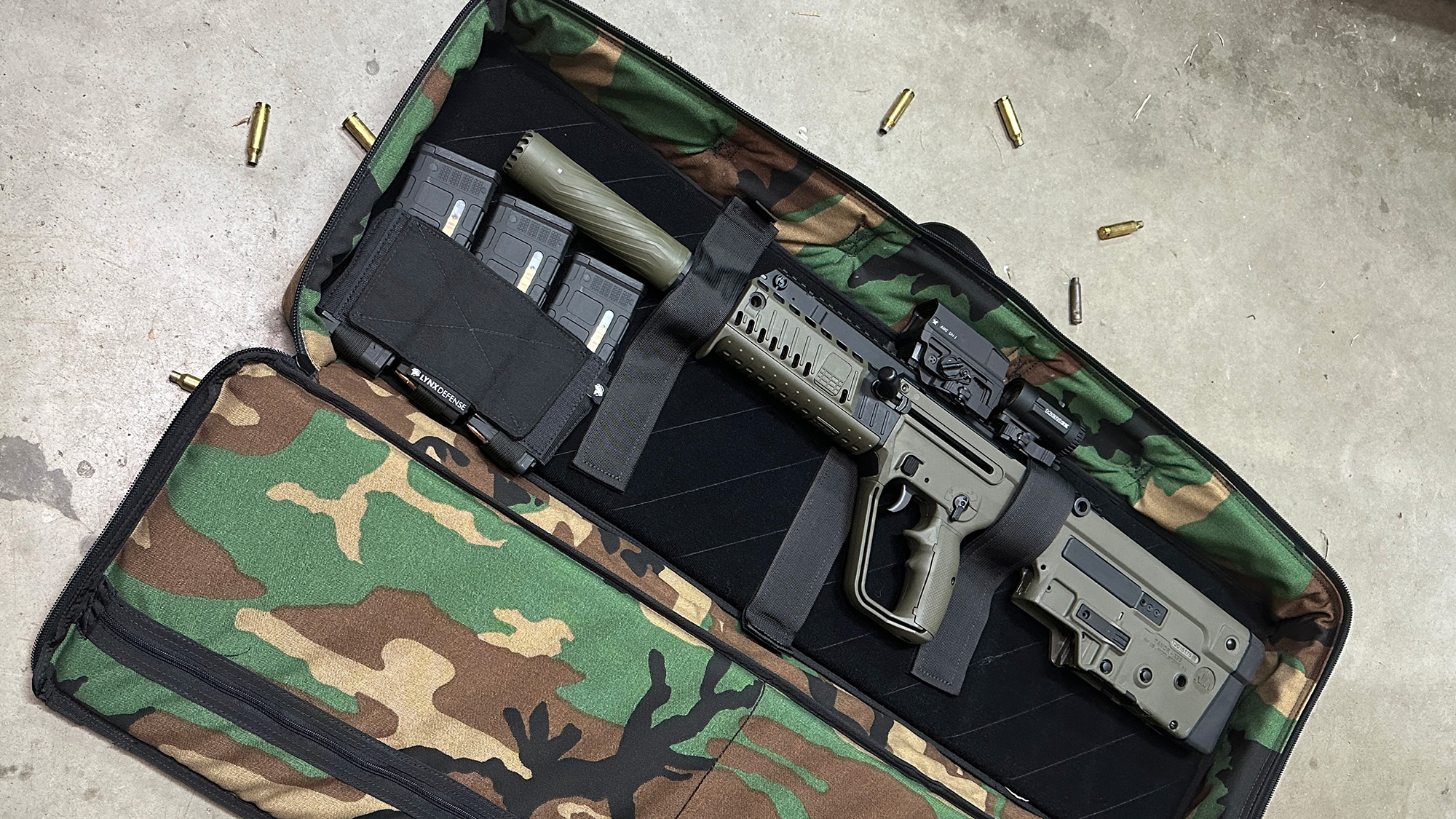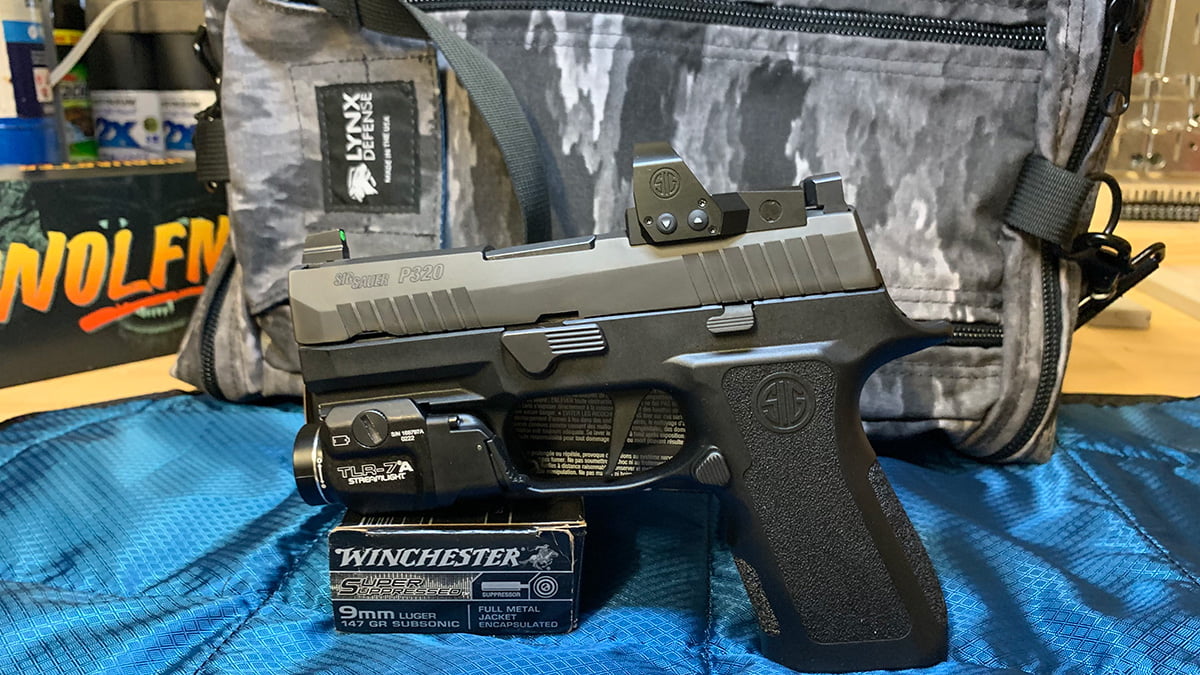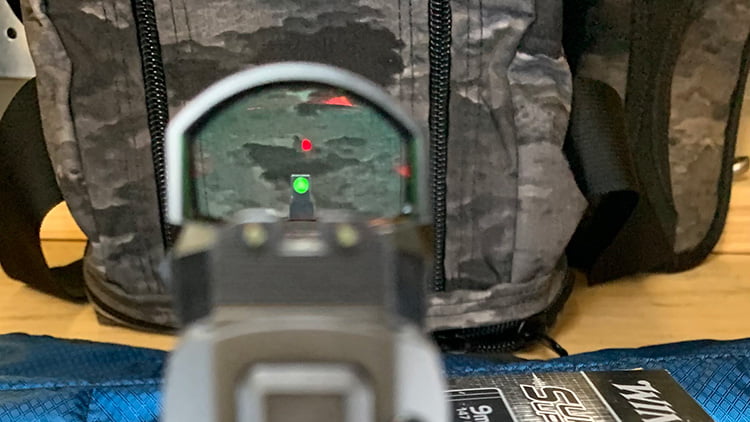
Ready to see what we have coming?
Lynx Defense will release some new things soon. Let us deliver them right to your inbox!

Lynx Defense will release some new things soon. Let us deliver them right to your inbox!

We may earn revenue from product links on this page and participate in affiliate programs. Learn More ›
The Sig Romeo 1 Pro is a relatively new pistol red dot by Sig Sauer that can be bought as a stand-alone optic or as a combo with a Sig P320. The Romeo1 Pro packs an impressive feature set at a reasonable price for a pistol red dot.
Sig may have busted into the pistol red dot market and created one of the best pistol red dots on the market today.
My first impressions of the Sig ROMEO 1 Pro are impressive.
Impressive size, impressive quality, and impressive dot clarity.
My only other extended use of a pistol-mounted red dot is a Vortex Venom on a Glock 17 MOS. Compared side by side, the Sig ROMEO 1 Pro the Vortex Venom is dwarfed in comparison.
The field of view on the Sig ROMEO1 Pro is also massive. It is wide and tall enough that unless I intentionally focus on the aluminum housing or the steel protective shroud if installed, it blurs into my normal field of view.
The fit and finish seem to be high quality, and the adjustment buttons are tactile and responsive.
The red dot itself, being the 6MOA version, is large and in charge. It also is the clearest single dot I have ever seen on any optic. With my astigmatism, that is saying a whole lot.
So the Sig ROMEO 1 Pro is the second generation red dot from the ROMEO 1 line.
Originally the Sig ROMEO 1 was made out of a lot of magnesium. This is an odd choice of materials, and you could say it didn’t work out well for SIG as soon after release their ROMEO1 red dots were having critical failures left and right.
While one might expect to have a small red dot fail if dropped from a decent height while striking the ground, we are not talking about this kind of abuse. We’re talking about normal everyday bumps while in holsters, getting banged against car doors, and the like.
This was obviously a huge problem, and could only be addressed by a redesign of materials.
The engineers at Sig went back to the design process and substituted aircraft-grade aluminum housing that would take care of the normal bangs and bumps that were causing their previous units to fail.
Taking it a step further, Sig also designed a steel shroud that can be installed, further protecting the optic and making it more rugged.
To install the shroud, you will need to remove the Sig Romeo1 Pro from its host firearm and slide the steel shroud into place. After you have completed that, you will reattach the ROMEO 1 Pro plus the shroud back onto the host firearm.
If I were to carry my Sig RXP XCompact for duty I would definitely opt to have the steel protective shroud installed. As it is, I carry the Sig RXP XCompact off duty and feel that because it’s concealed under at least two layers of garments, the steel shroud is not needed.
The adjustment buttons are located on the left side of the red dot. They are stiff rubber and have arrows that indicate an increase or decrease in brightness.
The glass is a molded aspheric lens with high-performance coatings to make the most of light transmission and have zero distortion.
The advertised weight for the Sig ROMEO1 Pro is 1oz. This is not a great deal in the grand scheme of things, but as the saying goes; ounces equal pounds, and pounds equal pain.
I personally think the advancement in aiming and ease of use when using a red dot such as the Sig ROMEO 1 Pro far outweighs the menial one-ounce addition in weight.
The reticle that Sig packs into the ROMEO 1 Pro is nothing short of amazing.

I’m not sure what kind of witchcraft goes into modern red dots in general, but I have noticed the reticles in the Sig Romeo 1 Pro along with the Holosun 503G have seen a quantum leap in quality and clarity from the designs of the not so distant past.
The larger 6 MOA reticle found on my ROMEO 1 PRO is probably the sharpest red dot reticle I have ever witnessed. There is no distortion or any artifacts that I can see when viewing the red dot.
The larger red dot also aids in quicker target acquisition, and also greatly aids in quick follow-up shots.
For a pistol dedicated dot, I feel that the larger red dot is well suited for this exact roll.
The Sig ROMEO1 Pro is built with 100 MOA overall elevation adjustment and 100 MOA overall windage adjustment.

Each of these can be accomplished with the provided tool that can be hung on your keychain or a small flat head screwdriver.
The windage adjustment is found on the ejection port side of the sight and is clearly marked with the direction of travel.
The elevation adjustment is located on the top of the sight and is also clearly marked with the direction of travel.
These interfaces provide a tactile and audible click when adjusted.
This is what the modern shooter has come to expect from quality optics.
Sig opted to drop in a CR1632 battery to power the ROMEO1 Pro red dot.
The CR1632, while possibly not the most popular battery selection, is still common enough that you will find it used in a few other designs.
The CR1632 in the ROMEO 1 Pro will power the red dot for around 20,000 of use.
This claim is hard to substantiate simply because there are several variables that go into these claims.
First, the brightness at which the dot is set will greatly affect the life of the battery.
Second, Sig has included their MOTAC system into the ROMEO1 Pro. MOTAC stands for Motion Activated Illumination System that will power up the optic when it detects movement, and then power down the optic when it is sitting still, such as in a safe or on a bedside table through the night.
The MOTAC system effectively allows you to leave the ROMEO 1 Pro on indefinitely depending on your schedule of use.
Even so, I personally schedule a battery change on all my optics on a yearly basis. In my opinion, there is no reason to possibly have a failure due to neglect on such a cheap and easily preventable part.
As stated earlier, durability was a huge issue with the original ROMEO1.
When Sig went back to the drawing board, they knew exactly what they needed to work on.
They came away with a refined product that utilizes much more robust metallurgy to protect the glass on the new Pro model.
In addition to the ruggedized ROMEO 1 Pro itself, Sig also designed a steel shroud to further protect the glass on the red dot.
Few others have gone to that length to provide this level of protection. It bears a visual similarity to an EoTech’s protective housing.
The 30mm objective lens found on the Sig Sauer ROMEO1 Pro is quite large for this style of red dot. 30mm is the standard size of a dot that you would find on an AR.
The lens/sight picture is actually a little bit wider than the slide on the Sig P320 RXP XCompact itself.
This might sound odd, but when held in hand and then viewed downrange, it all melds into a seamless package.
The molded aspheric lens has a slight tint to it, but nothing that would occlude your vision in any appreciable way.
I can confidently say this is my favorite pistol-mounted red dot sight picture that I have experience with so far.
Operating the Sig ROMEO1 Pro is a simple affair. Once the red dot has its power source and is turned on, you then set the preferred brightness and that is it.
The MOTAC system will take care of the rest for you.

I have tried several times to pick the Sig P320 RXP XCompact up quick enough that I might be able to see the 6 MOA dot turn on, but I have been unsuccessful in doing so to date.
There are 10 day time brightness options available to the user. To actuate between these settings, you will push the corresponding button that is clearly labeled with an up or down arrow to achieve the desired effect.
I have found that my daytime brightness setting corresponds well with the needed nighttime setting when using my Streamlight TLR-7a that is mounted below the barrel (keep an eye out for a review of the Streamlight TLR-7a in the future).
As I currently do not have possession of night vision equipment, I have no way to test the night vision settings on the Sig ROMEO1 Pro. I do suspect however that it will perform as described from the factory.
If you are mounting the Sig Sauer ROMEO 1 Pro red dot to a pistol that does not have a rear sight for whatever reason, the ROMEO 1 Pro has muted rear sight dots on the back face that should coincide with the front sight.
In my application, the Sig P320 RXP XCompact comes standard with suppressor height night sights, and the mounting of any red dot to this host pistol does not remove said sights as is the case with other P320 offerings where the rear sight is part of the red dot cover plate.
Here’s a catch; the Sig ROMEO 1 Pro does not share a common footprint for mounting with many other pistol red dots. At the current time, the only other red dot that the ROMEO 1 Pro shares a footprint with is the DeltaPoint Pro.
For me this isn’t a big deal as the ROMEO 1 Pro was made to work in conjunction with the host firearm.
For my application, there is no need for a mounting plate, and the only reason I would have any material between the ROMEO 1 Pro and the slide is if I were to install the steel shroud.
Sig has recently released the ROMEO 2, and it reportedly will use the same footprint as the DeltaPoint and ROMEO 1 Pro.
After using the ROMEO1 Pro on my personal carry pistol for quite some time, I have to say I am impressed.
The beefed-up design, along with the large red dot helps me have confidence in the setup.
I would recommend the Sig ROMEO 1 Pro to anyone who has a native host that would not have to be milled specifically for this red dot or one that could utilize a mounting plate to achieve the same.
With all the different options available it would be hard for me to have a gun specifically milled to take this particular dot.
That being said, I do not plan on taking the ROMEO 1 Pro red dot off, unless I get a hold of a ROMEO2 of course.
I spent 30 minutes today trying to screw on the battery cap and was unsuccessful. Darndest thing I’ve ever seen. Sent it back for a refund.
Is anyone else having a problem with getting the battery cap screwed down ?
I haven’t but that’s a sample size of 1.